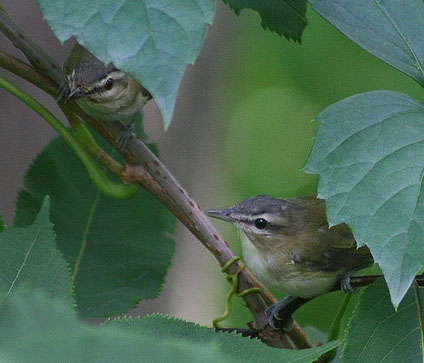|
Frontenac Breeding Birds (annual)
The North American Bird Conservation Initiative (NABCI) indicates that relative to other areas of Southern Ontario, the Frontenac Arch has a “high proportion of forest, shrubland and low intensity agricultural habitats” and that diversity of breeding birds is “exceptionally high” (Ontario Partners in Flight 2006).
The Frontenac Arch is an extraordinary region for breeding bird populations in Ontario. In this area, a nexus of several distinct ecoregions occurs: that of the Mixedwood Plains, St. Lawrence Lowlands, Boreal Shield, Laurentian Mixed Forest and Eastern Broadleaf Forest. The resulting matrix of breeding bird species on the Frontenac Arch is considerably diverse. A total of fifteen bird species classified as Species At Risk occur or have occurred historically on the Frontenac Arch. Of these, Cerulean Warbler, Louisiana Waterthrush, Golden-winged Warbler and Red-shouldered Hawk, among others, occur in the region in nationally significant densities. Frontenac Breeding Birds will be the flagship program of FBS and will assess distribution, relative abundance and demography of breeding bird communities on an annual basis and at an unprecedented level of detail for the Frontenac Arch.
Project Whip-poor-will (annual)
The recently completed Ontario Breeding Bird Atlas reported major declines amongst a guild of species called “aerial foragers”, those that feed on flying insects. Not just limited to Ontario, most aerial foragers are quickly disappearing across the continent. The Whip-poor-will, so symbolic of cottage country forests, was once much more common across Southern and Central Ontario than it is today. In Ontario, this nocturnal insectivore remains most abundant along a narrow band of the Southern Shield, including the Frontenac Arch. Due to their nocturnal ecology, existing programs for landbird monitoring have not reliably monitored the populations of Whip-poor-will and other members of the nightjar family. In summer 2009, we hope to initiate a dedicated program to index and track changes in populations of the Whip-poor-will.
Migration Studies (annual)
The Frontenac Arch is highly regarded as an important corridor of habitats enabling the migration of wildlife between the Boreal Shield and Mixedwood Plains/Appalachian ecoregions. FBS will initiate studies to characterize and monitor avian migration along the Frontenac Arch ecotone. One of these initiatives is to assess the ecological importance of the Frontenac Arch to migrating Northern Saw-whet Owls. This program will deliver, for the first-time, a baseline understanding of migration patterns and ecology of migrant owls in the region.
Education & Outreach (annual)
FBS will deliver a broad range of educational services to raise awareness of the Frontenac Arch. Utilizing our field programs as a platform, live presentations and demonstrations will be at the center of the outreach strategy, bringing the region’s visitors and residents up close and personal to the rich and fascinating biodiversity in the region.
More detailed information on these and other projects is coming soon - check back for additional details!

(Photo by Dan Derbyshire)
|